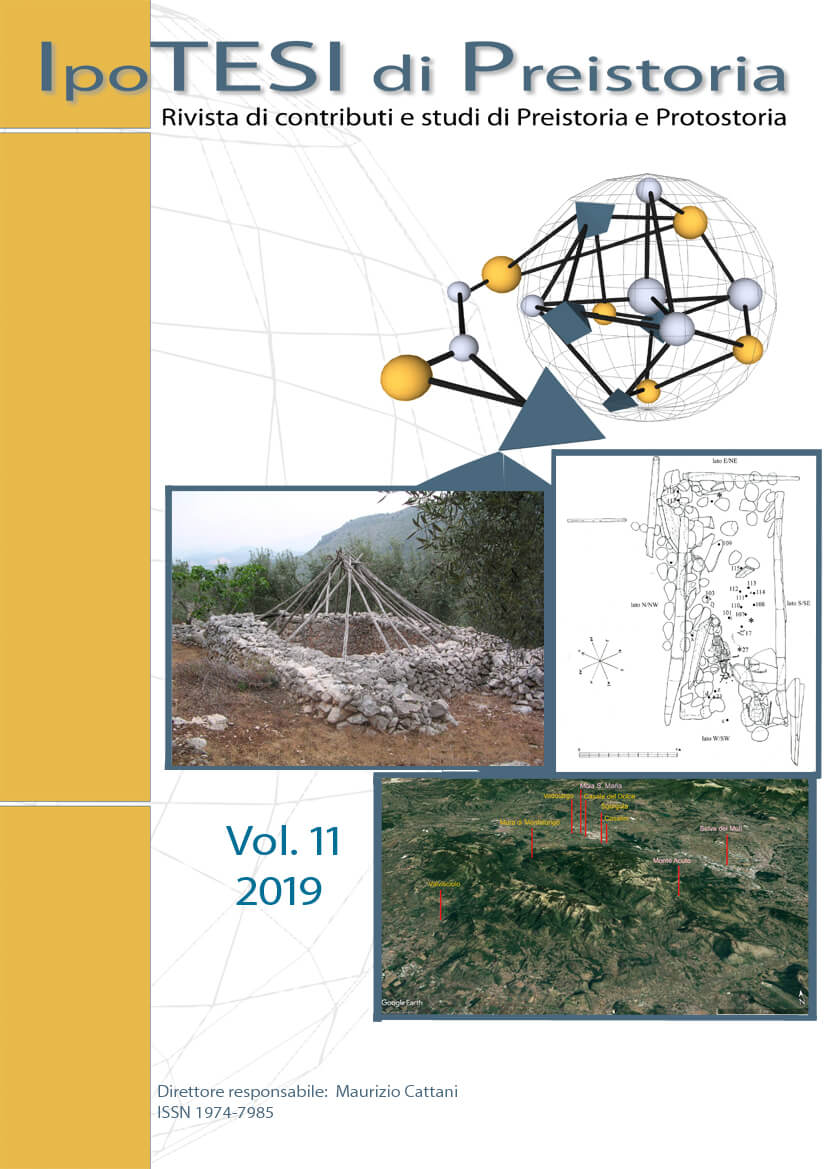“Territorio Aperto o di Frontiera?”after fifteen years. Confirmations and new evidences in central and southern Latium during the Copper Age
DOI:
https://doi.org/10.6092/issn.1974-7985/9899Keywords:
Copper Age, central-southern Lazio, rock cut tombs, settlementsAbstract
While the Copper Age documented almost exclusively by funerary contexts related to the facies of Rinaldone and Gaudo up until the 1990s, recent surveys have identified a large group of settlements covering almost all the development of the period. From the Monti Lepini, except for the sporadic presence of some artefacts in the inland areas, there are no new data, even in the absence of targeted research on the territory's occupation during this period and the attestations available to date are limited to the piedmont areas. dei Monti Lepini, following the new discoveries made in the Valle del Sacco and in the “Campagna Romana”, are part of a larger area of heritage of the two main facies known for central-southern Latium. With the discovery of a substantial number of discoveries of type of funerary and not related to the facies of Rinaldone in the Roman area, a series of objects on the Alban Hills and the old discoveries at the edge of the Lepini Mountains, have allowed to identify a third pole of the facies, called as "Roma-Colli Albani group ". The recent dating of the tomb of Sgurgola-Valle Anagnina documents a frequentation of the territory to the Monti Lepini from the early stages of the Copper Age. Some events, perhaps not entirely peaceful, occurred during an intermediate period of the Eneolithic, highlight the presence of villages and necropolis related to the facies of the Gaudo that penetrate from the South in the territory occupied by the people of Rinaldone, arriving as far as the Tiber valley. Traces evident for this period are the triple palisade and the moat of Selva dei Muli near Frosinone and the inhabited areas of Casetta Mistici and Tor Pagnotta, to which is added an elitist necropolis at Torre della Chiesaccia on the SE periphery of Rome. The people of Rinaldone continue to frequent the territory, but marginalized on the coast and in the sub-coastal tract. The picture that deduced from these new discoveries is rather complex and complex. There are further confirmations on the presence of these two cultural aspects that in a certain period interfere in the same territory, but with different characteristics and behaviours both in the home and in the funeral.Downloads
Published
2019-10-09
How to Cite
Carboni, G. (2019). “Territorio Aperto o di Frontiera?”after fifteen years. Confirmations and new evidences in central and southern Latium during the Copper Age. IpoTesi Di Preistoria, 11(1), 81–102. https://doi.org/10.6092/issn.1974-7985/9899
Issue
Section
Conference papers
License
Copyright (c) 2019 Giovanni Carboni
Copyright for articles published in this journal is retained by the authors, with first publication rights granted to the journal. The authors agree when submitting their work that it can be copied by anyone for noncommercial purposes but only if proper credit is given. Thus by virtue of their appearance in this open access journal, the articles have been declared free to use, with proper attribution, in noncommercial settings. All authors are responsible for the content of their work, including proper citation, attribution and usage permissions.
This journal is licensed under a Creative Commons Attribution NonCommercial 4.0 International License.
See also our Open Access Policy.
See also our Open Access Policy.





